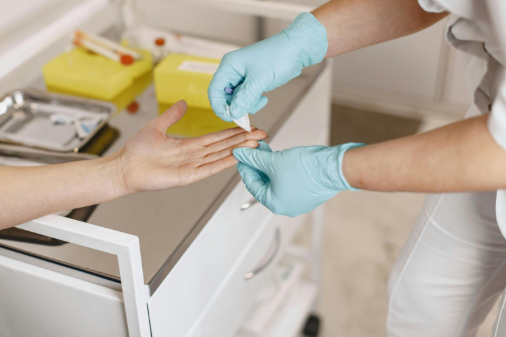May 1, 2025
What Is the Difference between a Bulging Disc and a Herniated Disc?
What Is the Difference between a Bulging Disc and a Herniated Disc?

Have you ever grappled with that stubborn, nagging back pain that just refuses to give in? Chances are, you've come across terms like "bulging disc" and "herniated disc" at some point. But what exactly do these terms mean, and how do they vary from one another?
Let's unravel the distinctions between a bulging disc and a herniated disc, shedding light on how they can impact your life and how to find relief in both situations.
Getting to Know Spinal Discs
Picture your spine as a stack of building blocks, with each block having a cushion in between. These cushions are your spinal discs, and they play a vital role in upholding the structural integrity of your spine.
The outer shell of a spinal disc is made of sturdy cartilage, known as the annulus fibrosus. Inside, you'll find a jelly-like substance, termed the nucleus pulposus. Together, they serve as shock absorbers, permitting your spine to flex, bend, and carry your body's weight while averting the vertebrae from grinding against each other.
The Bulging Disc: A Subtle Protrusion
A bulging disc, often labeled as a disc protrusion, is a relatively mild spinal condition. Imagine it as a balloon gently bulging from one section of your spine. In this scenario, the sturdy outer layer of the disc, the annulus fibrosus, remains intact. However, due to natural wear and tear associated with aging or minor injury, the inner nucleus pulposus exerts pressure on the outer layer, causing it to protrude outward.
How It Feels
In most cases, a bulging disc may not draw much attention. You might experience mild discomfort or stiffness in your back but not necessarily unbearable pain. In less fortunate instances, it might exert pressure on a neighboring nerve, leading to tingling, numbness, or weakness in the affected region.
Causes
Bulging discs typically result from the natural aging process or repetitive movements that strain your spine. Factors like obesity, poor posture, and improper lifting techniques can also contribute to this condition.
Treatment
The silver lining is that many bulging discs can heal on their own with some rest, gentle physical therapy, and over-the-counter anti-inflammatory medications. Embracing lifestyle changes such as maintaining a healthy weight, engaging in regular exercise, and practicing proper ergonomics can help deter future occurrences.
The Herniated Disc: The "Leak"
A herniated disc, in contrast, escalates the severity of spinal conditions. Think of it as a balloon with a tiny tear or hole. This breach allows some of the inner nucleus pulposus to escape. Diverging from a bulging disc, the outer layer of the disc is compromised, giving rise to more pronounced symptoms.
How It Feels
A herniated disc can be significantly more agonizing than a bulging disc. You may endure sharp, shooting pain, tingling, and muscle weakness, especially when the protrusion compresses a nerve. The location of the herniated disc in your spine determines where you'll experience these symptoms in your body. For example, a herniation in your lower back can lead to sciatica, which radiates down your leg.
Causes
Herniated discs can be triggered by the same factors that induce bulging discs but usually result from more significant traumas or injuries. This might be an abrupt jolt, an incident involving heavy lifting, or even a vehicular accident.
Treatment
Addressing a herniated disc may require a more comprehensive approach. It might encompass physical therapy, pain management, and in some cases, surgery if conservative methods fall short. The bright side is that many individuals with herniated discs make a full recovery with time and the appropriate care.
So, What's the Real Distinction?
The primary contrast between a bulging disc and a herniated disc boils down to the integrity of the disc's outer layer (annulus fibrosus). A bulging disc is akin to a gentle protrusion, with the outer layer still unharmed, while the inner nucleus pulposus exerts pressure. A herniated disc, on the other hand, resembles a "leak," where the outer layer is compromised, permitting the inner nucleus pulposus to seep out.
In essence, if you're told that you have a bulging disc, it's generally not as grave as a herniated disc, but it's still an issue that warrants attention. Both conditions have the potential to generate discomfort and pain, and in certain instances, may even give rise to complications if not properly managed.
The First Step to Relief
Whether you suspect a bulging disc or a herniated disc, the initial step toward finding relief is securing an accurate diagnosis. It's prudent to consult with a healthcare professional specializing in spine-related matters, such as an orthopedic doctor or a neurologist.
Your physician is likely to start off with a comprehensive physical examination, inquiring about your medical history and the specific symptoms you're grappling with. To confirm the diagnosis and pinpoint the precise location of the issue, imaging tests like X-rays, CT scans, or MRI scans may be recommended.
Bear in mind that a precise diagnosis forms the cornerstone for crafting a personalized treatment plan that addresses your unique symptoms and needs. Thus, don't hesitate to seek expert guidance if you're wrestling with persistent back pain or related symptoms.
Treatment Options
The encouraging news is that both bulging and herniated discs can frequently be managed effectively through a blend of conservative treatments, physical therapy, and adjustments to your way of life.
Here's an overview of common treatment options:
- Rest and Activity Modification: Initiate your healing journey with some rest. Limit strenuous activities and evade movements that aggravate your pain so you can provide your body with the time it needs to recuperate.
- Medications: Over-the-counter pain relievers like ibuprofen or acetaminophen can assist in managing pain and inflammation. In cases of severe pain, your physician might prescribe more potent medications or muscle relaxants.
- Physical Therapy: Collaborate with a physical therapist to design a customized exercise regimen that fortifies your back and core muscles, bolsters flexibility, and alleviates pain.
- Epidural Steroid Injections: These injections can aid in diminishing inflammation and offer relief from pain. They are usually contemplated when conservative treatments don't suffice.
- Surgery: Surgical intervention is typically reserved for scenarios where conservative treatments prove ineffective in alleviating pain or if there's a substantial neurological impairment. The type of surgery hinges on the particular condition and location of the disc issue.
Prevention Is Paramount
Whether you've encountered a bulging disc, a herniated disc, or simply want to safeguard your spine's well-being, preventive actions can be instrumental in maintaining a robust, pain-free back.
Here are some practical tips:
- Maintain a Healthy Weight: Extra pounds can impose unwarranted stress on your spine. Sustaining a healthy weight through a balanced diet and regular exercise can serve as a bulwark for your back.
- Champion Good Posture: Practicing proper posture is fundamental in minimizing the strain on your spine. Whether you're seated at a desk or engaged in heavy lifting, be mindful of your posture.
- Exercise Regularly: Bolstering the muscles that lend support to your spine can stave off disc issues. Infuse exercises that target your core, back, and abdominal muscles into your routine.
- Lift with Care: When dealing with hefty objects, bend your knees and keep the load close to your body. Steer clear of twisting movements while lifting, as these can precipitate back strain.
- Ergonomics Are Key: Ascertain that your work setup is ergonomically optimized. Your chair, desk, and computer arrangement should foster healthy posture.
- Stay Hydrated:
Adequate hydration is pivotal for preserving the fluid balance within your spinal discs. So, ensure you stay well-hydrated throughout the day.
At
Bayou Bend Health System, we’ll see that you are treated with the care and attention you need, whether you’re suffering from a bulging disc or a herniated disc.
Contact us to find relief today.



